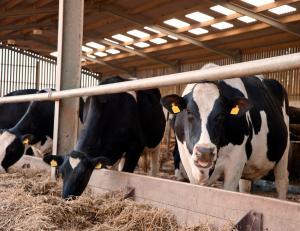When it comes to health, few topics are as confusing as dairy. According to some experts, milk and cheese are wonder foods that will build up your bones and keep you glowing. But turn your eyes to other studies and all you’ll see are statistics about increased cancer rates and even more bone damage than non-dairy dieters. What should you believe? How do you know whether to add dairy to your diet or cut it out completely?
Whether or not you choose to eat dairy is entirely up to you, but there are some facts that might influence your decision. This article will uncover the truth behind the health claims of dairy to help you make the right decision for your body- and your taste buds.
Why is dairy so controversial?
There’s no doubting dairy’s enduring popularity in western diets. Americans eat over 36 pounds of cheese every year and almost as much in ice cream. However, the item that’s starting to fall off the meal plan is milk. In fact, milk consumption has plummeted by a quarter in the past decade, and millions have attempted to give the drink up all together.
Why is there such a movement to purge dairy from people’s lives? Some experts tell us that milk is full of artery-clogging saturated fat and is a heart attack in a glass. Others claim that drinking milk leaves them feeling bloated and gassy because of lactose tolerance.
Is the skepticism of dairy simply a fad or is it worth listening to? Let’s look at the facts.

History of dairy
No one knows when humans first started drinking milk, but it must have been an adventurous discovery for the first person to taste the liquid coming out of a cow’s udder. In any case, the first milk-cows were tiny creatures called aurochs that roamed throughout Europe, North Africa and Asia before they were domesticated close to 10,000 years ago. Though aurochs were originally raised for meat, the herders that kept them soon valued them even more for their milk producing capacities.
Though plenty of mammals produce milk for their babies, cow (and goat milk) proved a perfect option for early humans because these animals are ruminants. This means that they have huge, four chambered stomachs that allow them to chow down fibrous stalks and tough grasses for food that are impossible for human stomachs to digest. This allowed early humans to get their milk from a creature that wasn’t competing for their limited food sources.
The facts behind lactose intolerance
Humans may have drunk milk for thousands of years, but we aren’t naturally adapted to do so. All mammals drink milk from their mothers when they are young, but only humans drink it through adulthood- and from another species. How do we manage this? Hundreds of generations ago a genetic mutation of lactose tolerance spread through populations that allowed humans to keep their lactose digesting abilities into adulthood.
However, lactose tolerance in adults is the exception, not the norm. In fact, over 75% of people are lactose intolerant and experience nausea, diarrhea and possibly even vomiting when they eat dairy products. Though lactose intolerance isn’t common in the western world, it’s extremely prevalent through Africa, Asia and South America. Even so, many lactose intolerant people can still eat fermented dairy products like yogurt, aged cheese or kefir without problem because the bacteria in these foods eat through the lactose sugars that cause many problems.
Is dairy healthy or harmful?
Understanding the health implications of eating dairy is a tricky topic. From one perspective, it’s celebrated as a health food full of essential vitamins and nutrients. Just one cup of whole milk contains 142 calories and 28% of your daily value of calcium, 26% vitamin B2, 24% of vitamin D, and 18% vitamin B12. Milk also contains 1.5 grams of saturated fat, a food that has been villainized by nutritionists for years as a cause of heart attacks, but the truth is that there is almost no link between saturated fat intake and heart disease. In fact, western countries that drink grass-fed milk actually have lower rates of heart disease than the United States.
However, for many people these concerns aren’t enough to make dairy a smart part of a healthy diet. Though dairy has traditionally lauded as an easy way to improve your bone density and prevent fractures, numerous studies have actually shown that the opposite is true. The rate of fractures is actually lower in countries where people don’t drink milk, and high consumption countries like the U.S. actually have far higher rates of osteoporosis. Slowly, it’s being revealed to scientists that simply drinking calcium-filled milk is no guarantee that any of it will actually end up in your bones.
So what should you believe? Is dairy good for you or secretly harmful? To really understand the impacts of different dairy products, you need to look closely at the different ways it can be made.
Quality difference in different types of dairy
The health benefits of eating dairy depend almost entirely on how it is produced, processed and stored. Below, some of the differences between the types of milk you can buy are explained.

Homogenized dairy
The process of homogenizing milk involves taking out some of the fat molecules in order to lower the calorie count and improve the perceived health benefits. However, the nutritional value of homogenization is a mixed bag. Reducing the fat content in milk might help you lose weight, but it will also make it harder for your body to absorb the fat-soluble vitamins and minerals in the milk. Worst of all, most milk flavor is lost when the fat is pulled out, so most low fat and skim milk products are loaded with unhealthy sugars to make up for the loss.
Pasteurized dairy
Since Louis Pasteur invented the process in the 19th century, pasteurization (the process of heating milk hot enough to kill dangerous bacteria) has been required by law in most countries for any dairy products you can buy. Unfortunately, pasteurization also kills off the beneficial bacteria in milk, which ruins the probiotic potential and reduces the overall vitamin content.
Raw dairy
Just like it sounds, raw dairy hasn’t been processed in any way, meaning that the nutritional content remains unchanged. This is the type of milk that was consumed for the majority of human history, but many countries (including the United States) have made it illegal to buy or sell due to the risks of contracting a dangerous pathogen. Despite the risk, many people believe that the health benefits of natural dairy far outweigh the risks.
Concentrated animal feeding operations (CAFO) dairy
In the western world, most commercial milk comes from CAFOs, also known as factory farms that are essentially enormous factories that produce massive quantities of animal products like meat, milk and eggs. The high tech efficiency of these systems makes our food expenses almost impossibly low, but those prices come at a high cost.
Animals are crowded into tiny cages in CAFOs, which raises their chance of getting sick. Because of this, farmers need to fill their cows with antibiotics to keep them safe, which both pass on traces of the medication to you in their milk and increase the risk of a dangerous superbug evolving. Most CAFO cattle are also fed large doses of bovine growth hormones to make them grow bigger faster and produce more milk, with unknown consequences for the consumer.
Finally, CAFO cows don’t get to forage for pasture like nature intended, but instead are fed an unnatural diet of cracked corn. This leaves them without access to essential nutrients and means that CAFO milk isn’t as nutritious as more natural types.
Pasture raised
Pasture raised dairy cows spend their time outside foraging through pastures and eat a diverse diet of herbaceous plants. It might be less cost effective to raise cows on pasture, but the health benefits make up for the cost. Not only do pasture raised cows produce more omega-3 fatty acids in their milk, they also have over 500% more Conjugated Linoleic Acid. There are even higher amounts of fat-soluble vitamins like Vitamin K2, though you’ll have to drink the whole milk varieties to get these benefits.
Pasture-raised dairy is a smart choice if you want to feed your body with healthy dairy, but keep in mind that fat-soluble vitamins won’t be present in low fat varieties, meaning you’ll need to drink whole to enjoy the benefits.
Which form of dairy is best?
Whether you choose to consume fat free or free range dairy products is entirely up to you, but it’s generally a good idea to stay far away from any milk that comes from CAFOs. Stick to local sources and find ways to buy milk that was raised as close to how nature intended as possible.
Want to avoid the store? Easy ways to make your own dairy products!
Making your own dairy products isn’t as hard as it looks. If you can find yourself a high quality supply of cow or goat milk, all of your favorite milk-based products can be made at home for a fraction of the cost of specialty stores.
- Cheese: All it takes is adding an enzyme to milk to get it to coagulate into cheese curds. Not only is cheese an easy way to reduce lactose in dairy, it also helps you preserve dairy for longer than milk will last on its own. There are hundreds of varieties of cheese available today, but you can make your own by following the advice of Claudia Lucero in her cheesemaking books.
- Kefir: It hasn’t become mainstream in America yet, but kefir is a unique fermented dairy product with the health benefits to prove it. Not only will you get a powerful dose of vitamin B12 and calcium in this yogurt like beverage, you’ll also keep your gut healthy with plenty of probiotics. Make your own by following the recipes here.
- Butter: Butter is a bread topper staple food around the world and is an easy way to get a healthy dose of saturated fats and other health benefits. With a little patience butter is easy to make; just follow the advice here.
- Yogurt: If you have an oven with a warming setting, you can make your own yogurt. Because of the fermentation process that dairy goes through in yogurt, many lactose intolerant people find they have no problem eating it. You can make your own and flavor it your favorite way by following the advice in this book.
In summary
Despite the confusing health claims, there’s a lot to like about dairy products. When you choose to consume high quality dairy products produced using natural methods, you’ll be providing your body with plenty of nutrition. If your body allows you to handle dairy products, feel free to find creative ways to incorporate them into your eating plan.
